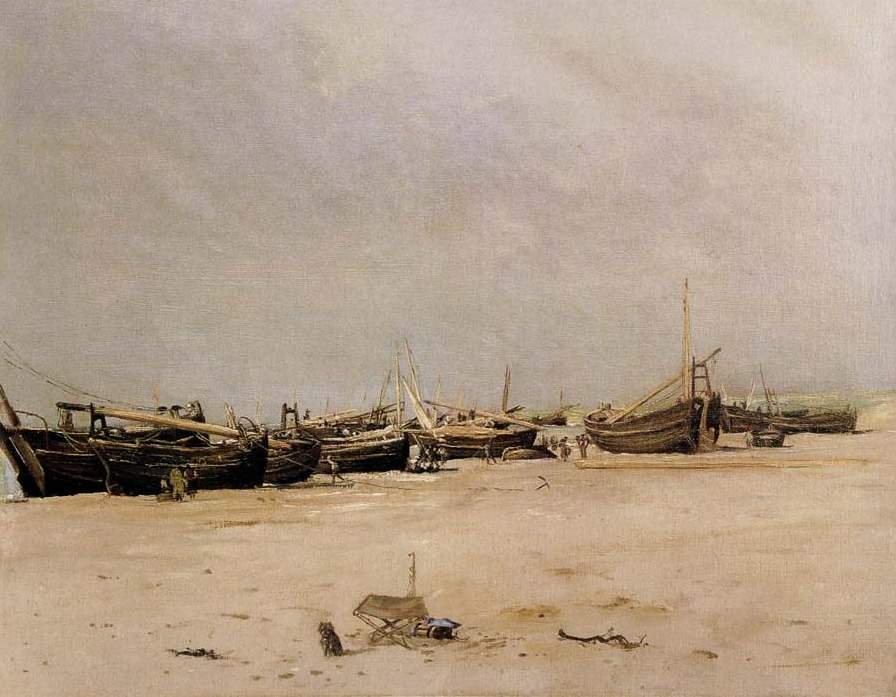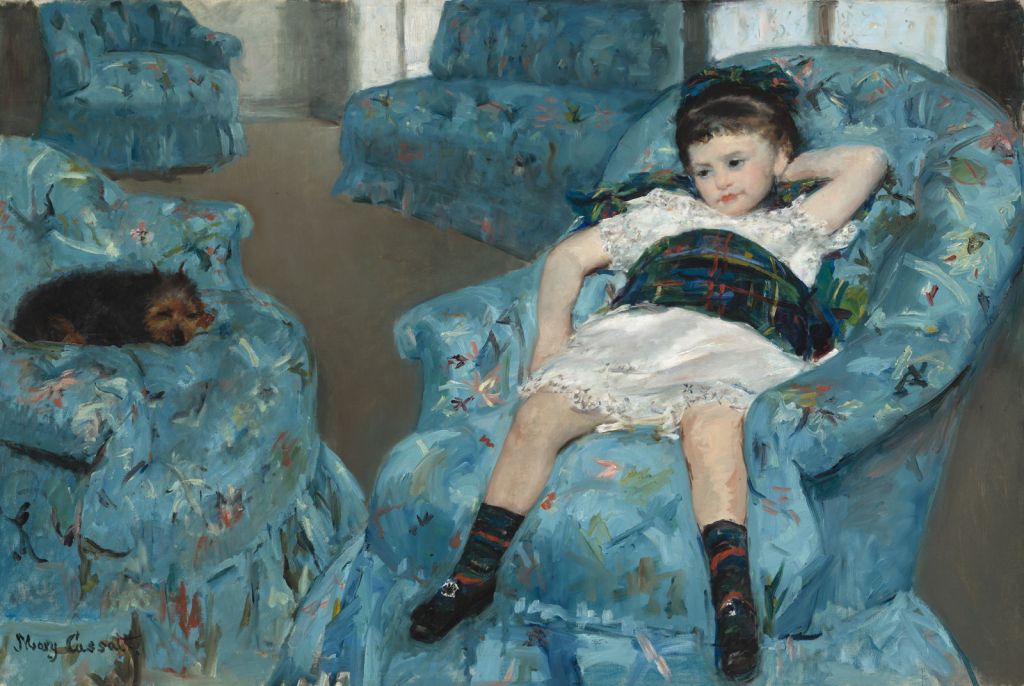When the American artist Mary Cassatt (1844–1926) submitted a portrait of a young girl for the American pavilion at the 1878 Exposition Universelle in Paris, she must have hoped for better luck than she’d been having with the Salon. She disliked the work of the favoured artists of the day in France, including Alexandre Cabanel and Léon Bonnat, and in 1877 both her entries had been rejected.
She had become increasingly impressed with the work of some of the French Impressionists, particularly since she had first seen the pastels of Edgar Degas. When Degas invited her to exhibit with the Impressionists at their fourth exhibition in 1878, she seized the opportunity, although that exhibition had to be postponed until the following year, because of the Exposition Universelle.

Cassatt’s hopes were dashed by the American jury, who rejected her first real masterpiece, Little Girl in a Blue Armchair (1878). It shows the daughter of friends of Edgar Degas, and Cassatt acknowledged the help given by Degas in its painting, which is consistent with examination and infra-red assessment of the work. The dog is a Brussels Griffon, believed to have been given to her by Degas, and was bred by Ludovic Lepic, another artist who had been introduced to the Impressionist group by Degas.
The following year, though, this painting was finally hung at the delayed fourth Impressionist Exhibition. Unlike its predecessors, attendance was impressive, with sixteen thousand visitors. Critical reception was also much more positive, and Cassatt’s paintings were among those most highly praised.
At the time, Little Girl in a Blue Armchair was hardly radical in its style, although its loose brushwork and informality would have done it no favours with a jury who would have little exposure to Impressionism for almost a decade. Just a year later, Degas painted his masterpiece showing one of the stars of the Cirque Fernando.

You might have thought that Cassatt’s friendship with Lepic – actually Vicomte Ludovic-Napoléon Lepic, grandson of one of Napoleon’s generals – might have helped. He had trained under Cabanel and seems to have done quite well at the Salon, so well that, when the Impressionists insisted that they mustn’t exhibit at the Salon, Lepic separated to pursue a more conventional career.
In 1877, Lepic started making annual visits to the beach resort of Berck, to the south of Le Touquet, not far from Calais, where he painted extensively. He is probably more widely seen (but not recognised) as a model for several of Degas’ paintings, including Count Lepic and his Daughters (1870) and Place de la Concorde (1875), which shows Lepic, his daughters, and their dog.

Seen alongside Lepic’s vacant seat on the beach at Berck is one of his Brussels Griffons. Any resemblance between his beach views and those of Degas is purely intentional.
Prior to her contact with Degas, Cassatt’s style had been quite conservative, and would surely have pleased the jury for the Exposition Universelle.

Eddy Cassatt (Edward Buchanan Cassatt) (1875) is a portrait of Mary’s young nephew (1869-1922), who became a notable American soldier and owner/breeder of racehorses.
Degas was a major influence, teacher and mentor to Cassatt as she improved her pastel technique, and learned and refined the making of prints, which were to prove central to her mature work.

Mother Combing Child’s Hair (1879) is one of Cassatt’s superb pastel paintings which would no doubt have involved Degas, and shows her mature style, with rich mark-making throughout much of the painting apart from the skin.

One of a series of paintings which Cassatt made of women at the theatre, Woman with a Pearl Necklace in a Loge (1879) used her sister Lydia as the model. Cassatt has here used a sophisticated composition, with extensive reflected images. The woman is seated in front of a mirror, and the whole of the background, apart from the red back of the seat, is seen in reflection. This adds great depth to what would otherwise have been a very tight and close composition.
Of course in 1878 painting in America knew little of Impressionism. I fear that American juries needed exposure to the paintings of someone like William Merritt Chase before they could have recognised Mary Cassatt’s masterpiece. Amazingly, no one bought this painting from Mary Cassatt until 1903.

